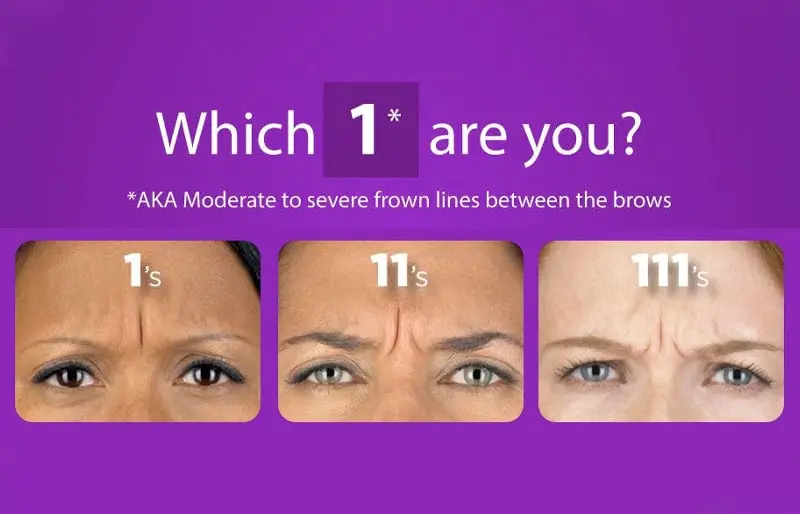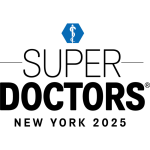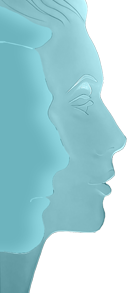

Measles is an airborne, extremely infectious and potentially severe rash illness. It can be very serious for small children, but is easily preventable by a vaccine. Two doses of MMR vaccine are 97% effective at preventing measles, 1 dose is 93% effective. It is uncommon for someone fully vaccinated to develop measles. However, breakthrough infections (when someone becomes infected after they have been vaccinated) can occur, especially in communities experiencing an outbreak where high levels of measles virus are circulating. But the good news is, fully vaccinated people who get measles seem more likely to have a milder illness. Fully vaccinated people seem also less likely to spread the disease to other people, including people who can’t get vaccinated because they are too young or have weakened immune systems.
Measles was declared eliminated in the United States in 2000. This was thanks to a very high percentage of people receiving the safe and effective measles, mumps, and rubella (MMR) vaccine. In recent years, however: U.S. MMR coverage among kindergarteners is now below the 95% coverage target—much lower in some communities—and is decreasing. The unvaccinated individuals have been protected through community immunity (herd immunity), meaning the vaccinated community.
The disease spreads through the air by respiratory droplets produced from coughing or sneezing or touching an infected surface. The measles virus can linger in the air for several hours after an infected person coughs or sneezes.
Measles is not a seasonal virus. However, measles is often spread over times of high travel (like spring break) or in situations where unvaccinated persons are in close quarters (like summer camp).
Immediately call your healthcare provider and let them know that you have been exposed to someone who has measles. Your healthcare provider can:
Determine if you are immune to measles based on your vaccination record, age, or laboratory evidence.
Make special arrangements to evaluate you, if needed, without putting other patients and medical office staff at risk.
If you are not immune to measles, MMR vaccine or a medicine called immune globulin may help reduce your risk of developing measles. Your healthcare provider can advise you, and monitor you for signs and symptoms of measles.
If you are not immune and do not get MMR or immune globulin, you should stay away from settings where there are susceptible people (such as schools, hospitals, or childcare) until your healthcare provider says it's okay to return. This will help ensure that you do not spread it to others.
Measles symptoms don't appear until 10 to 14 days after exposure. They include:
If you have measles, you should stay home for four days after you develop the rash. Staying home is an important way to not spread measles to other people. Ask your healthcare provider when it is safe to be around other people again.
You should also:
CDC considers you protected from measles if you have written documentation (records) showing at least one of the following:
You received two doses of measles-containing vaccine, and you are:
No. CDC considers people who received two doses of measles vaccine as children according to the U.S. vaccination schedule protected for life, and they do not ever need a booster dose.
If you're not sure whether you are fully vaccinated, talk with your healthcare provider.
There's no treatment to get rid of an established measles infection, but over-the-counter fever reducers or vitamin A may help with symptoms. Measles usually goes away on its own after about 10 to 14 days.
Vaccines, maintenance, and post exposure prophylaxis:
Vaccines, maintenance, and post-exposure prophylaxis


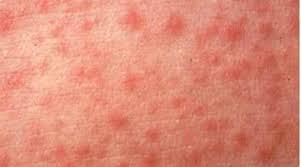
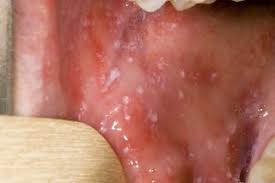
edit in Oxygen
Advanced skin cancer treatment with no downtime, scarring, or bleeding, better results than MOHS or cold steel excision.
Patients on anticoagulant therapy do not have to stop their medication before treatment, therefore not increasing their risk for stroke and/or heart attack, quick healing, & no risk of post-operative complications!
This treatment is especially great for actors/actresses or professionals in the public eye who can't afford downtime or a scar, athletes or weekend warriors who want to continue their workouts unencumbered and helpful with infirm or older patients who are not able to perform extensive wound care and withstand the rigors of a skin flap or graft.
Non-ablative fractional laser therapy has already demonstrated remarkable success with minimal downtime & discomfort as a gentle yet effective treatment of actinic keratosis (AK), the most common type of pre-cancerous skin conditions.
Now we can add the use of non-ablative fractional laser therapy as the up and coming gold standard to the treatment of squamous and basal cell carcinomas.
Shingles causes a painful, blistering rash on your skin. If you get shingles, you may notice the following three stages:
Before the rash appears: For 1 to 2 days before the rash appears, you may have pain, burning, or tingling on an area of skin where the rash will develop. Some people have described an “electrical sensation” on their skin before getting the rash.
Rash appears: A painful, blistering rash appears. It usually appears on one side of your body, often on the torso; however, it can appear anywhere on your skin. Some people get more blisters after the rash appears, so it can seem that the rash is spreading.
Rash starts to clear: As the rash clears, the blisters may crack open, bleed, and scab over. For most people, the rash will clear within 2 to 4 weeks.
If you have a rash of blisters on your skin or a rash that looks like those shown below, schedule an appointment immediately for a diagnosis. If you have shingles, it’s important to get treatment, preferably within 1 to 3 days.
If you’ve had the rash for longer than 2 to 3 days, it’s still important to schedule an appointment!
Along with a painful, blistering rash, some people can also have one or more of the following:
Rash: PLEASE call our office to schedule an appointment immediately or other health-care provider within 3 days of getting the rash. When treatment is started within 3 days, treatment can prevent possible complications, such as long-lasting nerve pain.
Receiving treatment after 3 days still has benefits, so you should still schedule an appoointment to see your doctor if you’ve had the rash for longer than 3 days.
Before taking any medication, it’s important to make sure that you have shingles.We will prescribe an antiviral medication. One of three antiviral medications is usually prescribed—acyclovir, famciclovir, or valacyclovi to:
Pain: Over-the-counter medication(s) can help, such as:
If you have severe pain, we may prescribe a medication that reduces inflammation, such as a corticosteroid.
Talk with your doctor about getting the shingles vaccine, Shingrix. You can get shingles again. A shingles vaccine that the U.S. Food and Drug Administration (FDA) approved in 2017 can greatly reduce your risk of developing shingles again. You can learn more about this vaccine at, Shingles Vaccine, CDC.
The CDC recommends that adults 50 years and older get two doses of the shingles vaccine called Shingrix (recombinant zoster vaccine) to prevent shingles and the complications from the disease. Adults 19 years and older who have weakened immune systems because of disease or therapy should also get two doses of Shingrix, as they have a higher risk of getting shingles and related complications.
Until the shingles rash clears, you are contagious.
Anyone who has not had chickenpox (or the vaccine for chickenpox) can catch the virus. This could cause chickenpox. To avoid infecting others, who could get chickenpox and later shingles, dermatologists recommend that you do the following until the rash clears:
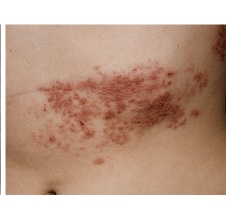
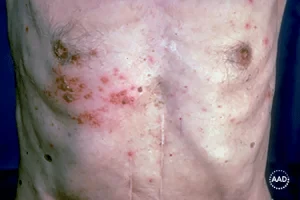
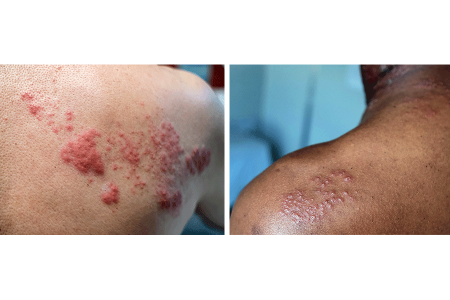
Having a shingles rash on your face is a medical emergency.
Even if the rash isn’t on your eye, it could still affect your eyesight. Immediately seeing a doctor for treatment could save your eyesight.
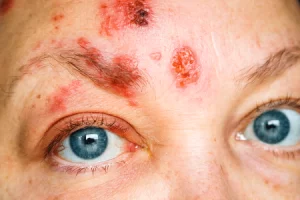
PRP and Fraxel Laser are powerful on their own, but together they offer a "powerhouse" treatment that will naturally transform and rejuvenate your appearance, while providing dramatic anti-aging results. The combination boosts your own collagen production and fibroblast proliferation increasing you skin's elasticity, texture and tone. Recover lost volume, diminish the appearance of fine lines, sun damage, skin pigmentation & acne scars. The addition of PRP (platelet rich plasma) after Fraxel Laser, not only accelerates the recovery process and adds nutrient rich growth factors that stimulate cells to generate newer, healthier tissue, it repairs aged existing tissue as well.
We increase the potency of platelets and other growth factors by using a double-spin, high speed centrifugation process to concentrate the Platelet-Rich Plasma (PRP) preparation which results in a more consistent superior cosmetic result. It is important to note that specific PRP preparation varies among healthcare providers which directly affects the quality of cosmetic results. Our patient's have said "the end result seems almost magical 🪄."
The combination of PRP/Fraxel Laser can yield a better result compared to using Fraxel or PRP alone. Facials that harvest and apply your own platelet-rich-plasma (PRP) became popular with cosmetic procedures because of their role in accelerating wound healing. Research in skin rejuvenation has proven PRP:
The Fraxel Laser creates thousands of microscopic, invisible treatment zones, allowing openings for the PRP "growth factors" to penetrate the skin. There are NO holes, or needles used to inject the PRP, providing a uniform immersion of the PRP growth factors to the treatment area. This promotes excellent results, faster healing and reduces downtime compared to other traditional PRP application methods .
So many advanced and innovative treatments are available to improve your skin, but how can you tell which treatment will most efficiently resurface and regenerate your complexion? Using Botox and dermal fillers can tackle some wrinkles and lost volume, but what about a treatment that actually replaces dull and damaged skin cells with new and healthy tissue? A Fraxel laser resurfacing treatment paired with PRP is the ultimate solution. You are effectively jump-starting your body's own natural rejuvenation systems, including collagen & elastin growth.
This non-surgical treatment allows you to stimulate your body’s own natural repair and rejuvenation processes. On the day of your visit we apply a thin layer of numbing cream to the treatment area. While you are numbing we draw a small amount of blood to use for the PRP. The centrifuge process takes approximately 20-25 minutes. After 30 minutes the numbing cream is removed. Dr. Robinson treats the area using the Fraxel Laser. Once the Fraxel treatment is complete your PRP (platelet rich plasma) is gently applied over the treatment area.
Both Fraxel Laser and PRP have long-lasting benefits. By stimulating one's own collagen & elastin production, PRP and Fraxel yields wonderful results within a few days that may last years.
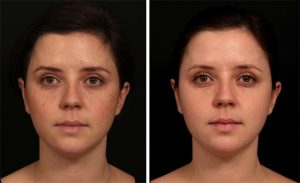
So many of us struggle from natural hair thinning and hair loss. In fact, according to the International Society of Hair Restoration Surgery, approximately 56 million adults in the United States are affected by hair loss. Different conditions can lead to different symptoms of hair loss, ranging from male pattern baldness, which is characterized by hair loss at the temples followed by thinning along the crown, to thinning or loss that can occur in patches throughout the scalp. Hair loss or hair thinning can occur in both men and women and can be a source of self-consciousness or embarrassment and, up until recently, few non-surgical treatments offered total hair restoration.
Recently, Platelet-Rich Plasma (PRP) has become a popular regenerative treatment in the world of dermatology. PRP treatment for hair restoration, is not a permanent solution for hair regrowth, but it can help to slow down the progression of hair loss and promote new growth in areas where there was previously none. It can offer significant improvements in hair thickness, density and reduces hair shedding. The treatment takes platelet-rich plasma from the patient’s own blood and once isolated, the PRP solution is injected into the area affected by hair loss or hair thinning. The PRP triggers the natural hair growth process and strengthens the hair follicles to promote regrowth and prevent hair loss. The procedure is simple and requires minimal downtime or discomfort, making it an excellent option for patients who are wary of surgical options, such as hair transplants.
Board-certified dermatologist Dr. Bruce Robinson is an expert in PRP treatment and was one of the first dermatologists to incorporate PRP into his private NYC practice. PRP has been a boost to patients with hair loss, delivering improved hair growth and hair thickness with his PRP hair restoration patients. Experienced dermatologist, Dr. Bruce Robinson, has been treating patients in his Upper East Side, New York City office for more than 30 years and is an expert in a range of cosmetic and dermatological procedures. If you’re frustrated by thinning hair or hair loss, Dr. Robinson is here to help.
Therapy for hair loss is a three-step medical treatment in which a person's blood is drawn, processed, and then injected into the scalp. Platelet-rich plasma is a concentration of platelets that is 3x the normal blood value, and contains many growth factors that stimulate hair follicles and can safely be performed up to every month, based on how much hair growth is required. PRP is a great solution for hair loss in both men and women, especially when hair transplant surgery is not an option. PRP injections can stimulate new hair growth in men who suffer from androgenetic alopecia (known as male pattern baldness) and women who suffer from female pattern baldness.
The Platelets in the PRP contain proteins that are needed in order to promote the rate of tissue healing and regeneration within inactive hair follicles. Inside these platelets are a variety of intracellular structures such as glycogen (a form of glucose), lysosomes (which break down the proteins), and alpha granules (which contain clotting and growth factors that get released during the cell repair process). Platelet-rich plasma-derived growth factors can also play a part in stem cell differentiation within the wound healing process of the musculoskeletal system.
In multiple studies through the Journal of Cosmetic Dermatology and Aesthetic Plastic Surgery, patients suffering from hair loss were found to benefit from PRP injections. The PRP hair restoration treatment led to a significant local increase in hair number, extended growth phase, and improved hair thickness. Though the treatment is not yet FDA-approved, there is scientific proof that the treatment is beneficial for hair strength and new hair growth at and around a PRP injection site.
The science behind PRP uses proven benefits of PRP to naturally promote new cellular growth. PRP is directly involved in regenerative healing within the body. PRP growth factors can thus influence hair growth and can in fact restore hair follicles, in turn improving the look and feel of a patient’s hair.
PRP hair rejuvenation treatment involves the injection of platelets into the area of the body in which hair loss is occurring, for example the crown of the head. Platelets are taken from the patients own body via a blood draw that occurs at the start of the appointment. After the blood has been drawn, it is placed in a centrifuge, which is a machine that separates the platelet-rich plasma from the red blood cells. When isolated, the platelet-rich plasma is then injected into the treatment area. The platelets release growth factors, which stimulates the dermal papilla cells that are crucial in the hair growth process. For that reason, a series of PRP injections help to trigger hair regrowth to restore lost hair.
Though of course the number of PRP treatments varies depending on the hair condition and aesthetic goals of the individual patient, a typical patient will do three sessions of PRP therapy. Further treatments will be evaluated at the end of the fourth month (after the third PRP treatment).The sessions are typically spaced 4-6 weeks apart, and Dr. Robinson personally performs all consultations and injections. PRP treatments can also be used in tandem with hair transplantation to help accelerate hair growth. At your initial consultation with Dr. Robinson, you will be able to discuss all hair treatment options, including PRP injections. Dr. Robinson will use his expertise to provide the best medical advice, diagnosis, and treatment available for hair loss.
Unfortunately, as PRP hair restoration is considered a cosmetic procedure, PRP for hair loss is not covered by health insurance. For more information, it’s best to contact your insurance company directly to ascertain coverage.
Many patients come into their initial consultation with Dr. Robinson wondering, how fast does PRP work for hair loss? Of course, any results will vary depending on the nature of hair loss and desired results of each patient. However, the majority of patients see initial improved hair thickness and hair growth several weeks after treatment. Optimal results from PRP injections are apparent, on average, about 5-6 months after treatment.
A good candidate for PRP hair restoration is a patient who is showing signs of thinning hair or hair loss. Typically, candidates who have experienced hair loss more recently, or who are dealing with early hair loss, respond best to PRP hair treatment. Those with hair follicles that have been dormant for longer on the scalp are less likely to be improved by PRP therapy. It’s good to note that if you are diagnosed with a underlying disorder such as lupus or thyroid disease, you are unlikely to benefit form PRP injections, as these conditions will continue to worsen hair loss over time. Additionally, patients should not take blood thinners during PRP hair restoration treatment, as the procedure will be significantly less effective.
Call today to schedule an appointment with Dr. Robinson.
Dr. Robinson was a pediatric resident @ NYU / NYC Health & Hospitals / Bellevue prior to pursuing dermatology. He enjoys seeing pediatric patients and specializes in difficult to diagnose rashes, birthmarks, acne, warts, molluscum and eczema.
We recommend annual skin cancer screenings for almost everyone. Essentially all skin cancer can be cured if detected early, and an annual skin cancer screening is the best way to find them at this early stage. Patients with a skin cancer history usually require screening every 3 to 6 months. Skin cancer screenings are truly life saving! Don’t be shy—make your appointment today! Contact us today to schedule an appointment.
Dr. Robinson offers a full 20-30 minute thorough skin exam. You'll be given a gown and asked to take off everything but your undergarments. The gown and undergarments can be moved in ways to keep areas of your body covered during the exam and to protect your privacy. Your appointment will involve a thorough examination of your skin — from the top of your scalp to the bottoms of your feet — by a board-certified dermatologist. Remove any nail polish, this will allow us to fully examine your fingers, nails, and nail beds. We will look for suspicious spots that could be cancerous.
After years of sun, squinting, laughing, frowning, smoking, and worrying, the skin around the eyes and on the forehead will often develop deep lines and wrinkles called “expression lines.” A frequent concern is that they often make you look older, tired, or stressed. Until recently, these advanced furrows have been difficult to treat. Now, by utilizing this FDA approved temporary muscle-relaxing agent, you can reduce "permanent expression lines". Botox®, Xeomin®, Jeuveau®, & Dysport® are extremely popular “neuromodulators,” used to treat fine lines and wrinkles. It is one of our favorite procedures to perform because of the extremely high patient satisfaction rate, and a great place to start if you are considering a cosmetic procedure for the first time.
If you want to prevent the earliest fine lines from becoming full-blown wrinkles, preventative use of neuromodulator's can be the solution. Approved for patients who are 18 years and older and most experts agree that patients in their mid to late 20s and early 30s are at a good age for preventative treatment.
With a very fine needle, neuromodulators are painlessly injected into the specific muscle causing fine lines and wrinkles on the face. No anesthetic is required. Treatment is effective, safe, and takes approximately 10 minutes. Immediately following treatment you may resume regular activities.
The effects usually last 3 to 4 months, and fade away gradually. Following several treatments, the results may last 4 to 8 months or longer. Neuromodulator's offer extended relief over the course of long-term treatment.
Side effects of neuromodulator's, if any, are usually mild and temporary. Botulinum toxins contain proteins, which in some circumstances may be naturally safeguarded against by the body's ability to produce antibodies. If antibodies are formed, the therapy will generate a lesser response. Temporary bruising, mild pain and swelling are sometimes experienced, though these symptoms resolve on their own within 3 to 5 days. In rare cases, there can be a slight drooping of an eyelid or asymmetry of expression. If this should happen please notify our office.
The do’s:
The don’ts :
Typically, the effect of a neuromodulator is visible within 5 -7 days. Maximum benefits are reached between 10 to 14 days. Once the muscle becomes dormant and the skin softens, you will have a more relaxed and youthful appearance. Neuromodulator treatments are not a substitute for the results achieved with a facelift. The optimum appearance may be achieved with neuromodulator therapy in conjunction with a facelift, dermal fillers, laser resurfacing, and skin rejuvenation.
BOTOX® is a therapeutic muscle-relaxing agent derived from the bacterium, Clostridium Botulinum. For over a decade ophthalmologists have applied BOTOX® for it's original intention, the treatment of blepharospasm. Physicians have utilized BOTOX® for years as a cosmetic treatment to correct visible signs of stress and aging.
The contractions and movements of the facial muscles are controlled by signals from the brain. BOTOX simple prevents the muscle from allowing responses to these messages. As a result, the muscle relaxes and the overlying skin remains unwrinkled and smooth.
Botox injections have been FDA approved to treat excessive sweating. In the skin, Botox selectively turns off the sweat glands resulting in a normal appearance without wetness. Treatment is performed during an outpatient visit and no recuperative time or special care is needed afterward.

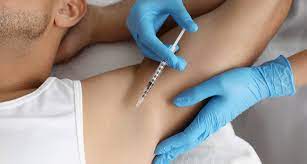
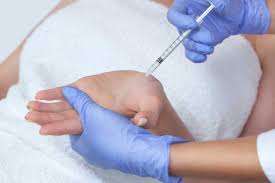
Schedule an office visit to discuss your concerns and skincare goals with Dr. Robinson and the office visit cost will be applied to the future cost for the "consulted procedure". The "consulted procedure" must be completed within 30 days of your consult visit.
